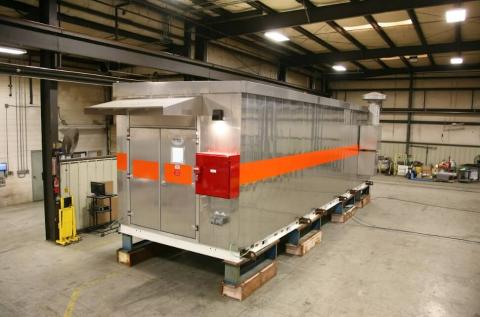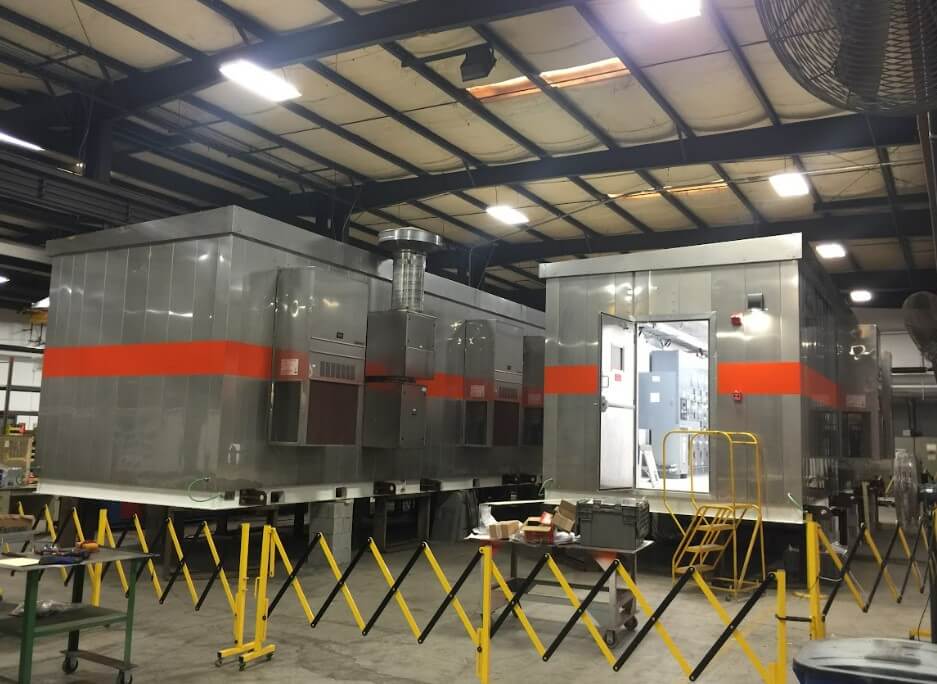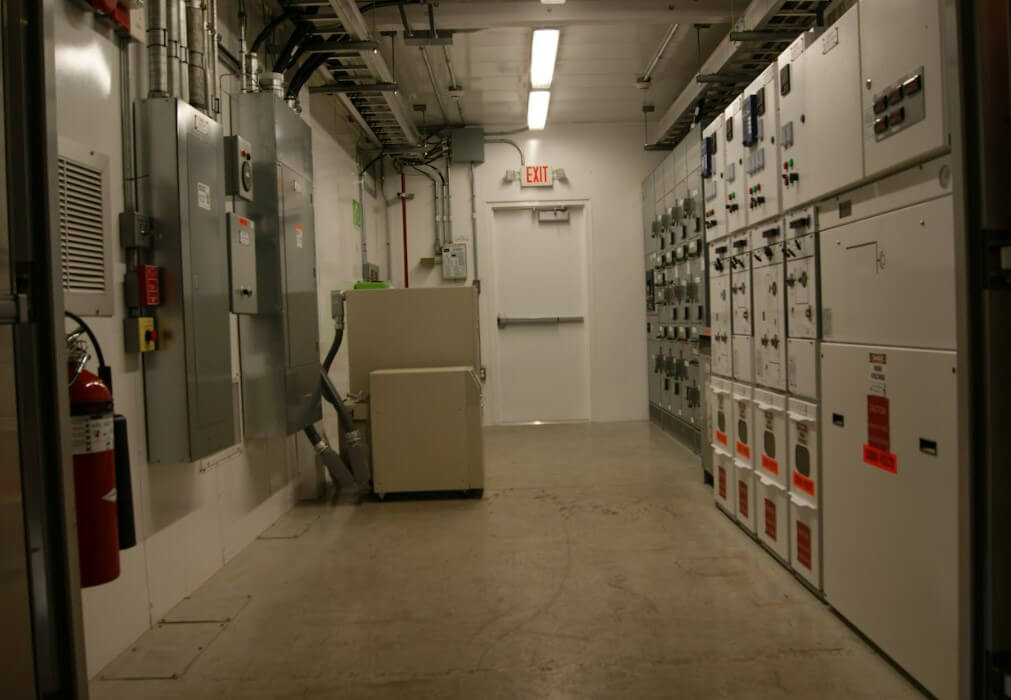
In today’s fast-paced world, efficient and reliable power management systems are critical for the operational success of the railway industry. As rail networks expand and modernize, the complexity of managing power across various components increases. Centralized Power Management (CPM) is emerging as a strategic solution that integrates and streamlines power distribution, enhances reliability, and supports sustainability efforts within the railway sector. This blog post explores the fundamental aspects of centralized power management in the railway industry, highlighting its significance, components, benefits, and future prospects.
The Centralized Power Management
Centralized Power Management refers to the coordinated control and distribution of electrical power from a central point to various subsystems within a railway network. This approach optimizes power utilization, reduces waste, and enhances the overall efficiency of power systems. In the railway industry, CPM encompasses everything from traction power systems for locomotives to auxiliary power systems for signaling, communication, and other essential functions.
Key Components of Centralized Power Management
- Power Generation Sources: Railways typically rely on a mix of power generation sources, including traditional fossil fuels, renewable energy (solar, wind), and grid connections. A centralized management system can integrate these sources to optimize energy use based on demand and availability.
- Substation Management: Railway substations play a critical role in converting high-voltage electricity from the grid into usable power for trains and infrastructure. Centralized management ensures effective monitoring and control of these substations to maintain operational efficiency.
- Monitoring and Control Systems: Advanced monitoring and control systems are integral to CPM. These systems collect real-time data from various sources, enabling operators to monitor power consumption, detect anomalies, and respond promptly to potential issues.
- Energy Storage Systems: Integrating energy storage systems (such as batteries) within the centralized power management framework allows for effective load balancing and peak shaving, ensuring a stable power supply even during high-demand periods.
- Communication Networks: Effective communication between different components of the power management system is essential. Centralized systems utilize robust communication networks to facilitate data exchange and enable real-time decision-making.
Importance of Power Management in the Railway Industry
- Operational Efficiency: Efficient power management reduces energy consumption, lowers operational costs, and enhances the overall performance of railway services. By centralizing power control, operators can optimize power distribution based on real-time demand, minimizing energy waste.
- Reliability and Safety: A centralized approach to power management improves the reliability of power systems, reducing the likelihood of outages that can disrupt services and compromise safety. Continuous monitoring allows for early detection of issues, enabling proactive maintenance and quick resolution.
- Sustainability Initiatives: The railway industry is increasingly focused on reducing its environmental impact. Centralized power management can facilitate the integration of renewable energy sources, enabling rail operators to meet sustainability targets while reducing carbon emissions.
- Enhanced Data Analytics: Centralized systems collect and analyze vast amounts of data, providing valuable insights into power consumption patterns and performance metrics. This data-driven approach helps operators make informed decisions to optimize their energy use further.

GET IN TOUCH
In a hurry? Call us at 276-285-3841
Implementing Centralized Power Management in Railways
1. Assessment of Current Systems
Before implementing a centralized power management system, railway operators must assess their existing power infrastructure. This involves evaluating current energy consumption patterns, identifying inefficiencies, and determining the need for upgrades or replacements.
2. Selecting the Right Technology
Choosing the right technology is critical for successful implementation. Operators should consider factors such as scalability, compatibility with existing systems, and the ability to integrate renewable energy sources. Advanced software solutions that offer real-time monitoring, predictive analytics, and remote control capabilities are essential for effective centralized power management.
3. Training and Development
To ensure the successful adoption of a centralized power management system, railway operators must invest in training their staff. Personnel should be well-versed in the new technologies and processes to maximize the benefits of the system. Continuous professional development and training programs can help employees stay updated on the latest advancements in power management.
4. Stakeholder Engagement
Engaging stakeholders, including government agencies, utility providers, and community representatives, is crucial during the implementation process. Collaborative efforts can help address potential challenges and ensure that the centralized power management system aligns with broader infrastructure and sustainability goals.
5. Continuous Monitoring and Improvement
After implementation, continuous monitoring is vital to ensure that the centralized power management system operates effectively. Regular assessments can help identify areas for improvement and optimize power management strategies.
Challenges of Centralized Power Management
While centralized power management offers numerous benefits, there are challenges to consider:
- Initial Costs: Implementing a centralized power management system requires significant upfront investment in technology and infrastructure. Railway operators must weigh the long-term benefits against initial costs to justify the investment.
- Integration with Existing Systems: Integrating new technologies with legacy systems can be complex and may require extensive modifications. Operators must carefully plan and execute integration efforts to minimize disruptions.
- Data Security Concerns: Centralized systems are susceptible to cyber threats, which can compromise sensitive data and disrupt operations. Robust cybersecurity measures must be implemented to safeguard the integrity of the power management system.
- Regulatory Compliance: Railway operators must navigate a complex landscape of regulations governing energy management and sustainability. Compliance with these regulations can be challenging and may require ongoing monitoring and reporting.

GET IN TOUCH
In a hurry? Call us at 276-285-3841
The Future of Centralized Power Management in the Railway Industry
As the railway industry continues to evolve, centralized power management will play a crucial role in shaping its future. The increasing demand for sustainable transportation solutions and the integration of advanced technologies, such as the Internet of Things (IoT) and artificial intelligence (AI), will further enhance the capabilities of centralized power management systems.
1. Integration of Smart Technologies
The future of power management in railways lies in the integration of smart technologies. IoT devices will enable real-time monitoring and control of power systems, facilitating data-driven decision-making. AI algorithms will analyze consumption patterns, predict demand fluctuations, and optimize energy distribution, further improving operational efficiency.
2. Emphasis on Renewable Energy Sources
The shift towards renewable energy sources is set to continue, with centralized power management systems playing a key role in this transition. By effectively integrating solar, wind, and other renewable energy sources into the power grid, railway operators can reduce their dependence on fossil fuels and lower their carbon emissions.
3. Enhanced Resilience and Adaptability
The railway industry must become increasingly resilient to external challenges, such as climate change and economic fluctuations. Centralized power management systems can enhance adaptability by allowing operators to quickly respond to changes in demand and supply, ensuring the continued reliability of rail services.
4. Increased Collaboration and Partnerships
The future of centralized power management will likely involve greater collaboration between railway operators, energy providers, and technology companies. By working together, stakeholders can share best practices, innovate new solutions, and drive the development of more efficient power management systems.
Conclusion
Centralized power management is poised to transform the railway industry, driving efficiency, sustainability, and reliability. As rail networks evolve and embrace new technologies, the importance of effective power management will only continue to grow. By investing in centralized power management systems, railway operators can optimize their operations, reduce costs, and contribute to a more sustainable future. The railway industry’s commitment to centralized power management will not only enhance the efficiency of services but also ensure a greener and more reliable transportation system for generations to come.
Products We Offer
Swartz Engineering strives to provide top-quality products to achieve our customer's needs. Our products include:
- Type 76 DC Relay
- Type 82 DC Relay
- Swartz Engineering’s Type 64 Ground Relay
- Type 32 Reverse Current Relay
- Type 150 DC
- CSM Shield Monitor
- Metal Oxide Surge Arrestors
- Transducers
- MVIS SL Slim-line Contactor
- Fully-tested Power Control Rooms
- Swartz Engineering’s Portable Substations
For nearly half a century, we have proudly led the industry in ensuring safety and efficiency. Swartz Engineering is a trusted family-owned company dedicated to providing top-notch power distribution solutions for the electrical industry. Contact us today!
